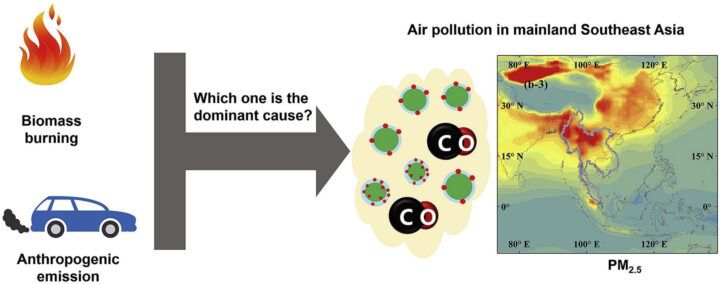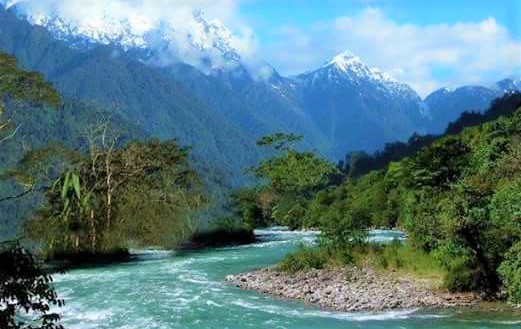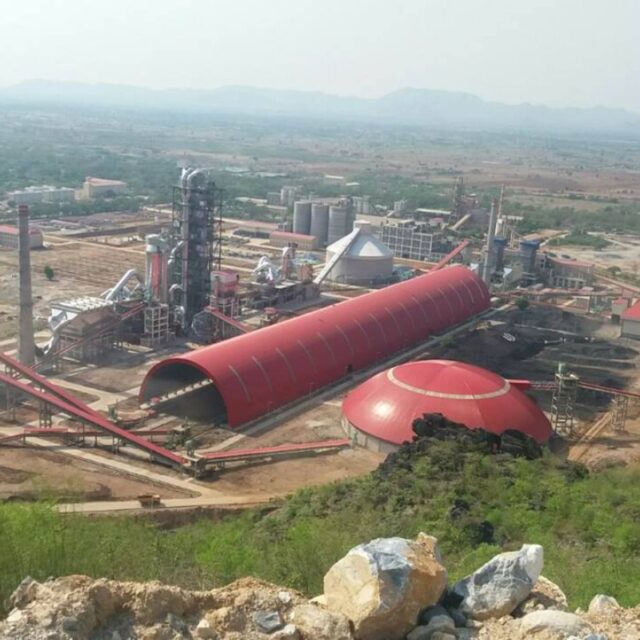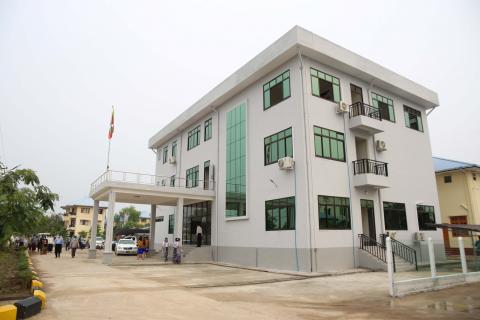Than Htun (Myanmar Geosciences Society)
As fossil fuels become more expensive and concern about the increase in carbon dioxide and other pollutants produced by fossil fuels in the atmosphere intensifies, industrial researchers have become more invested in developing alternative energy sources. Biomass is one of these alternatives. Many industrial scientists argue that burning of bio-mass is a carbon-neutral contributor to greenhouse gases in the environment. In its simplest form, this argument states that because the photosynthesis that produces the crops draws carbon dioxide out of the environment, burning the plants for energy releases the same carbon dioxide back into the atmosphere. Critics argue that the fertilizer and farm equipment required to produce the biomass add significant carbon dioxide to the atmosphere.(Metz, B., et al.,2007)
What is Biomass?
Biomass is living or once-living biological material. Strictly speaking then, all life is biomass. All plants and animals on Earth today will at some point die and decay-ashes to ashes, dust to dust. In most cases, however, we are referring to vegetation-living or dead (NASA). From energy point of view, biomass is organic matter (based on carbon, hydrogen and oxygen) of non-fossil origin that has an intrinsic chemical energy content. It includes all terrestrial and aquatic vegetation, better known as virgin biomass, and all the biodegradable organic waste, such as municipal solid waste, animal waste, agricultural and forestry residues, and certain types of industrial waste.
Biomass Burning
Biomass burning is the act of burning living, or once-living, biological material. Formerly believed to occur mainly in the tropics, Earth-observing satellites have revealed a global distribution of biomass burning. Although huge fires, often visible from space, occur in the savanna grasslands of Africa and South and South America and tropical forests in South America and Southeast Asia, they can take place wherever vegetation is abundant. Boreal forests for example – found at much higher latitudes – are major sources of biomass burning.
Biomass burning results from either: 1. natural processes, such as ignition by lightning strikes; or 2. anthropogenic (i.e., human-induced) activity, such as burning vegetation for agricultural land anthropogenic biomass burning can occur almost anywhere on the globe, the majority of biomass burning in the tropics stems from human causes, whereas in extra-tropical regions-such as Boreal forests- natural causes are more common (NASA).
Changing Atmosphere and Ecosystems
When biomass is burned, copious amount of gases and particulate matter are released, billowing smoke plumes can fill the sky, and entire ecosystems can change in seconds. These changes have both long-and short-term effects on Earth’s atmosphere and climate system.
Biomass burning alters atmospheric composition- by releasing gases and particulate matter-affecting air quality and posing risks to human health and activity. Inhaling carbon monoxide, methane, nitrogen oxides, formaldehyde, and smoke particles can cause asthma and /or heighten other health issues.
Epidemiological studies in the developed world have documented associations between indoor and outdoor exposure to biomass combustion products and a range of adverse health effects. A conservative estimate of the current contribution of biomass smoke to premature mortality in Europe amounts to at least 40,000 deaths per year. As the evidence from studies in the developed world is still limited, further studies are necessary to more precisely quantify the adverse health effects of biomass combustion. This should include comparative studies to document similarities and differences between effects of combustion products from biomass and fossil fuels (Torben Sigsgaard et al.,2014)
Fire emissions include greenhouse gases, such as carbon dioxide (CO2), nitrous oxide (N2O), and methane (CH4). Greenhouse gases, together with other trace gases, lead to changes in atmospheric chemistry, such as the concentration of ozone (O3)-another greenhouse gas. Increases in greenhouse gases (i.e., CO2, N2O, CH4, O3) affect Earth’s energy balance and warm the Earth’s surface, ultimately influencing Earth’s climate system.
Despite the increase in research in biomass burning and climate interactions during the 1990s, the current estimates of biomass consumption by fire remain the same as in 1990. Andreae (1991) estimated that the total biomass consumed by annual burning was on average ca. 8,680 teragrams (Tg) (1 teragram + 1 million tonnes = 1Q12g) of dry material, with 3,690 Tg coming from savanna burning, 2,020 Tg from agricultural wastes, 1,540 Tg from forests and 1,430 Tg from the burning of wood fuels. In total, this results in the release of 3,500 Tg of carbon in the form of CO2 annually (JOHN L.INNES, 2000).
However, periodic forest fires are part of the natural cycle, and are actually beneficial. They clear out excessive brush and overgrowth, and return nutrients to the soil, helping maintain a healthy ecosystem.
Although biomass burning can have both positive and negative effects on a vegetated ecosystem, an increase in either natural or anthropogenic biomass burning events could have major repercussions for Earth’s climate system. The warming of Earth’s climate is expected to increase the number od warm spells, heat waves, and droughts in many regions of the world including southern and eastern Australia, eastern New Zealand, Europe, and the western United States. These changes are likely to increase the number of annual wildfires and health risks. Fortunately, scientists are able to study the location of fires and the effects of biomass burning from the vantage point of space, providing a vital global perspective on fires and how they are impacting Earth-our Home.
Understanding Earth’s Intricate System
To assist in understanding Earth’s intricate system, scientists often study changes in the cycle of a particular component, such as the cycle of water or carbon. For example, plants participate in the carbon cycle by “inhaling” carbon dioxide and converting it into organic plant matter as part of photosynthesis. Animals then eat these carbon-containing plants (or they eat other animals that have eaten these plants) as a means of generating essential tissues needed for survival. Whether alive or dead, all biomass contains carbon. The continual exchanges of carbon between the biosphere, geosphere, hydrosphere, and atmosphere define Earth’s carbon cycle. Carbon moves more quickly through some parts of the carbon cycle than others. Respiration, for example, is a rapid process compared to the lifetimes of trees, carbonate rocks, or fossil fuels.
Sprawling forests, extensive savanna grasslands, and vast oceans are all examples of carbon reservoirs. When forest and grasslands are growing, they absorb and store more carbon than they release, and serve as carbon “sinks.” For this reason, forest and other largely vegetated areas play a major role in regulating Earth’s climate. A large forest for example, absorbs carbon dioxide from the atmosphere, uses carbon to photosynthesize, and releases oxygen back into the atmosphere that animals (including humans) breathe to survive. When large forests and other vegetated areas are burned (i.e., biomass burning), the carbon stored within is released into the atmosphere, primarily as carbon dioxide-a greenhouse gas.
Sometimes carbon reservoirs are replenished with new vegetation; this is typically true for the savannas in Africa and South America during the annual growing seasons. New growth removes carbon dioxide from the atmosphere. However, not all carbon reservoirs are replenished, and large-scale fluctuation in these reservoirs affect the global carbon cycle, ultimately impacting Earth’s climate system. Conserving planet Earth-our home is our inevitable obligation. This article is intended for young conservation scientists in Myanmar.
References:
NASA. 2018: Understanding Earth Biomass Burning
John L. Innes. 2000:Biomass Burning and Climate: An Introduction
Metz, B., et al., eds.2007: Climate Change
Torben Sigsgaard, et al.2014: Health impacts of anthropogenic biomass burning in the developed world
Shuai Yin, et al., 2019: Influence of biomass burning on local air pollution in mainland Southeast Asia from 2001 to 2016











